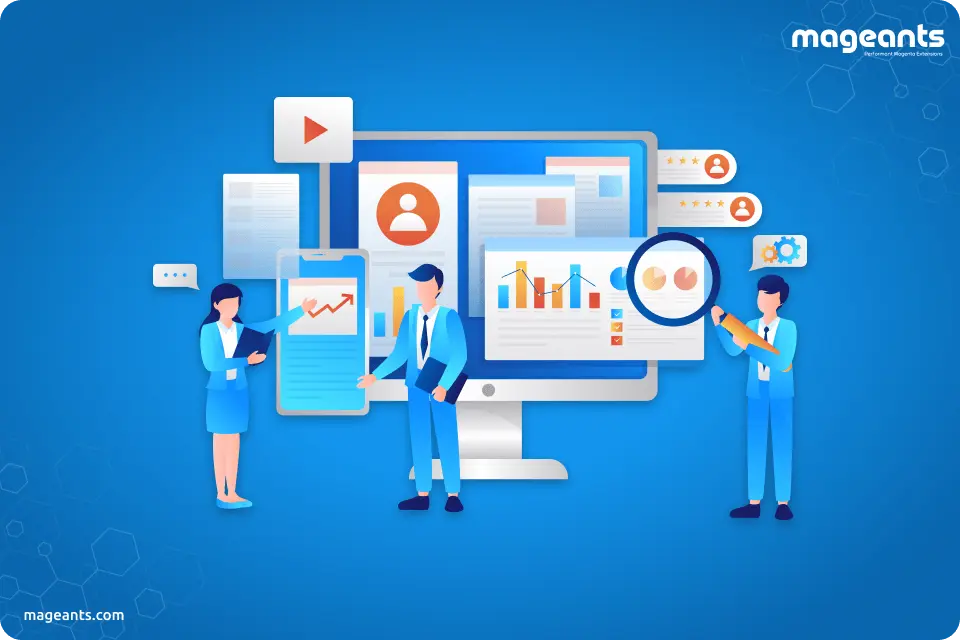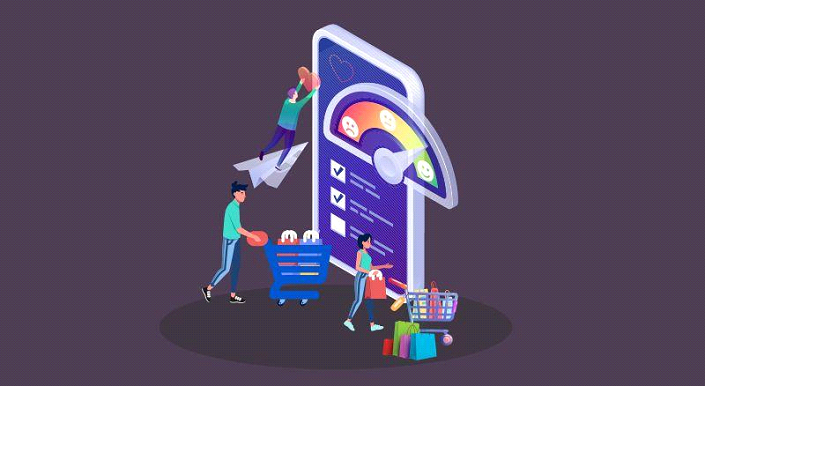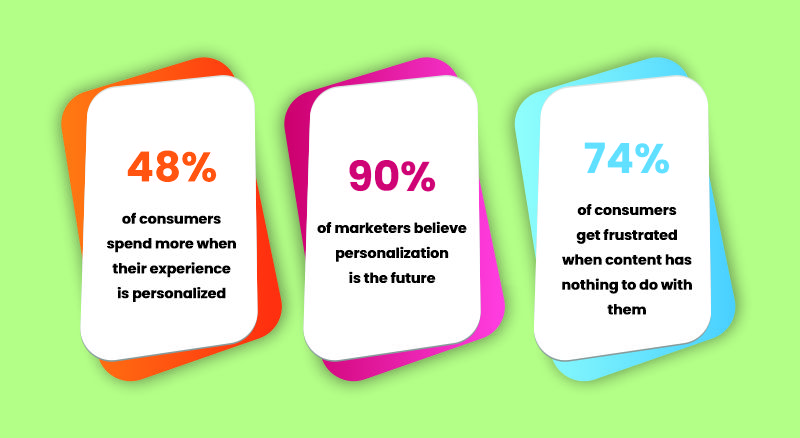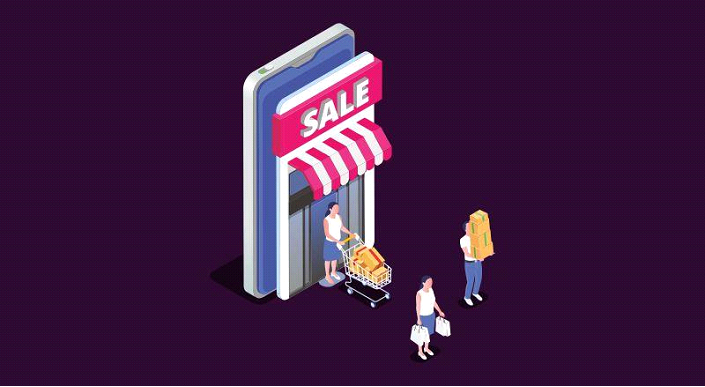
Top B2B Ecommerce Trends and Statistics for 2023

Over the past few years, the B2B industry has innovated and continually expanded, offering so many new services and products to their customers. B2B eCommerce is changing rapidly for the last few years and is expected to be in trend in 2023-24. With the pandemic situation, the eCommerce landscape is transforming and new trends have emerged.
B2B leaders are now trying to implement new strategies in their businesses to adapt to a changing market and take advantage of the increasing demand for online selling, digital connectivity, growing customer base, new expectations regarding self-service and personalization experience, and an increase in mobile usage. All these trends are helpful in B2B businesses in many ways.
In this blog, we will learn more about the B2B eCommerce statistics and the B2B eCommerce trends. Let’s explore the statistics first.
B2B eCommerce Statistics 2023:
Let's take a look at the B2B eCommerce Statistics you should know about.
There are a lot of B2B marketing strategies but 50% of companies prefer blogging as the best marketing strategy while 40% still believe that social media content and email newsletters work best for them. Whichever method they use, it's crystal clear that offline marketing strategies like brochures and print ads have been replaced now with the digital method of marketing. Even audiences now find the brand on various social media channels and others.
A lot of content demand comes from the audiences belonging to the IT industry, followed by HR, executives, education, and marketing. After trying all the content types many of the B2B business owners said that videos are one of the most useful forms of content. After videos, blogs, and case studies are the most used content for marketing.
B2B eCommerce Trends for 2023:
The adoption of new and digital technologies in businesses is not new now. Due to Covid, every business has seen growth in the eCommerce industry. B2B companies have recognized the importance of digital eCommerce and other trending technologies. Many business leaders have started looking at digital channels and also planned to invest for the same for the long term and sustainable growth.
Below we have listed some of the market-driven B2B eCommerce trends that are going to boom in the next upcoming years.
⦁ Focus On Customer Experience

B2B merchants never considered online selling as a core part of their B2B business and sale strategy. Instead, they make websites as a kind of portals to replace the customer service representatives with online technology. According to the “Customer Experience Management Market" report the customer experience management market is expected to Jump $14.9 billion by 2025”.
They just provide a B2B eCommerce website for their existing customers so that they can use their established term account to place reorders easily. But now every B2B business owner wants to get new customers and an eCommerce platform is one of the great places for that. To get new customers, online search tools help a lot because using online search tools, customers can easily search, find and place their order. It will not be as difficult as it was earlier.
Merchants need to be online as more B2B buyers are now searching online and purchasing products. And with the increase in the number of B2B buyers, there is also an increase in demand for purchasing products online. Before even reaching out to sales representatives of brands, B2B buyers perform extensive research about the brand and the products they sell online.
Also, Read- Important Ecommerce Metrics
⦁ Personalization Experience Has Increased

In B2B eCommerce, offering a personalization experience is both a challenge and a benefit. Moving to online selling not only helps to understand more about customers’ demands but also helps to improve the customer experience using this data. This way provides a better customer experience for your buyers with effective cross-selling & upselling and other relevant marketing strategies.

With current trends, customers are demanding personalization and B2B suppliers are trying every way to offer such personalizations like email marketing, on-site content, customers’ name on the login screen, etc. Offering effective personalization is a kind of challenge because many of the marketing suites don't offer such advanced personalizations. To provide personalized content and attract B2B buyers by offering such a better experience.
⦁ Explosion of Marketplace
For the last few years, marketplaces like Etsy, Amazon, Alibaba, and eBay have controlled the retail B2B industry. Half of the global online retail sales are based on Marketplaces. Very few B2B buyers are left who are not using the online marketplaces currently, rest all have adopted this new trend of making purchases via the marketplace.
Enterprise Marketplace is now a new business model that helps to create a wider ecosystem, with all new features, functionalities, new capabilities, and new ways to generate more revenue. This way the marketplace is more efficient in terms of cost & time as they serve as an all-in-one solution for B2B buyers.
One of the key advantages of B2B marketplaces is that it has an ability to attract and engage more customers and boost sales. It also has the ability to reach new customers, test new products, and also reach global markets.
⦁ Omnichannel Selling

While given choice between remote, in-person, and eCommerce channels, buyers have shown interest in all three. Omnichannel is now considered a new standard and not an exception. Omnichannel is nothing but a combination of both, brick and mortar stores for physical presence and digital brand presence by selling online. This means customers can visit offline stores, be on websites too and also find you on social platforms.
Many B2B leaders believe that instead of traditional methods, omnichannel is a more effective and successful way. They are also confident about this trend, so they are sure that investing in omnichannel experiences will lead to great success in the future. In the post-pandemic world, there is expected growth in software, IT field, and digital marketing, and all of these are directed at optimized omnichannel retailing.
Also, Read-Important Ecommerce Website Features
⦁ Growth of Digital Self-Service
The next B2B trend in line is Self Service. This means customers want to complete the purchase by searching the information on their own without even contacting the sales team or waiting for any response emails.
The main advantage for buyers is the ability to control the experience conveniently the same way when they purchase products from big marketplaces like Amazon or Flipcart. And in another way, it is also beneficial for sellers too because it will be time-saving for the staff to assist customers manually. This will directly boost sales and increase customer satisfaction.
Additionally, nowadays buyers demand such digital self-service so with no other option B2B businesses have to adjust and provide these self-service options to their B2B eCommerce platform.
⦁ Mobile Ecommerce

We all know the use of smartphones has been increased day by day. Average adults spend almost 5 hours a day on smartphones. It has been noticed that half of the B2B queries are made on smartphones. So along with the online B2B business, it needs to be mobile friendly too. Brands that have adopted mobile apps have seen growth in their revenue.
Build a digital commerce app for your B2B buyers so that they can easily log in to the app, select the products and complete the purchase, all in just a few minutes. This is how you can accept B2B mobile commerce.
⦁ New Payment Options
When it comes to daily task solving, B2B clients jump on to the financial tools instead of any marketing strategy or any services. This fact is 100% true for small and medium-sized businesses because after the pandemic almost all the B2B buyers have started being active on a wider range of all the modern and online payment options.
With new experiences, integrations, and news channels, it's common to adopt the new payment options for B2B eCommerce. In 2023, it's expected B2B clients will accommodate the new payment trends instead of that old-fashioned manual or direct processes. This will also help to resolve the issues of current systems like payments delays or digital transaction fees.
Final Words:
In numerous industries, B2B eCommerce is set as a norm because of Covid. The trend of buyers expecting B2B eCommerce is stronger than ever once we emerge from the pandemic. For manufacturers, the key is to understand these B2B eCommerce trends and statistics to define a clear path for their business.
We all know that the B2B eCommerce businesses are progressing quite remarkably. In the wake of the global pandemic, almost all B2B businesses are turning more to online sales and online payment options. In this digital world, the need for digital transformation is real. So businesses need to adapt to the demands of their customers which are digitally based and can be accessed from anywhere.
You can also contact us and consult or hire magento 2 developers to find out more about trends in B2B eCommerce and join the eCommerce revolution today.
